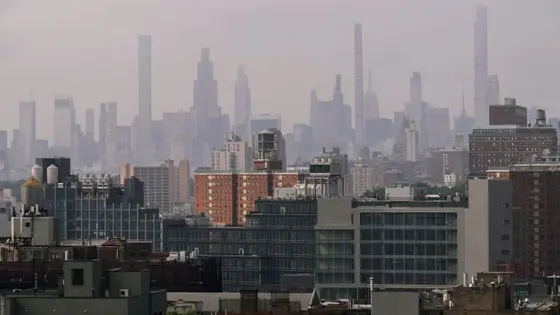T4K3.news
Legionnaires disease cases rise in New York
Health officials link recent cases to aging water systems and enforcement gaps in the city

A rise in Legionnaires disease in New York City is linked to aging water systems and enforcement gaps.
Environmental and human factors drive Legionnaires disease in New York
New York City has faced multiple Legionnaires disease outbreaks, with Harlem's cluster killing three people and sickening dozens. Nationally, cases have risen, driven in part by greater awareness among doctors and by warm summers that help the bacteria grow in cooling towers and plumbing. Legionella spreads when people inhale mist from contaminated water in buildings water systems.
New York has long regulated cooling towers and water systems after a 2015 South Bronx outbreak that spurred laws requiring registration and regular testing. Yet city data show hundreds of cases each year and inspections have declined because staff are stretched thin. Experts say aging infrastructure sediment in water and high population density raise exposure risk, particularly in high poverty neighborhoods. Prevention remains possible when owners test and maintain systems, but human factors and resource gaps can undermine effort.
Key Takeaways
"This was one of the reasons why I left and moved to Connecticut"
Anita Long describes personal impact of the outbreak
"Legionella thrives in warm water and aging pipes"
Explanation of how the bacteria grows
"Air quality improvement is very good"
University of Albany study context clarifying potential tradeoffs
"City inspections have dropped off due to staffing shortages"
Enforcement challenges in NYC
The piece underscores a core tension between strong rules and weak enforcement. Even with New Yorks enhanced regulations, breakdowns come from staffing shortages and occasional box checked compliance. New research and expert warnings remind readers that policy choices can have tradeoffs and that prevention requires steady funding and attention.
The Harlem outbreak also highlights equity issues since risk concentrates where underlying health problems and housing conditions are worse. Strong laws help, but without consistent inspections and accountability they cannot fully stop outbreaks. The takeaway is simple a persistent problem needs persistent effort and steady investment.
Highlights
- Legionella blooms where water systems age and testing fails
- Tests and maintenance are not optional they are lifesaving
- Staff shortages turn prevention into a moving target
- Public health needs steady funding not press releases
Enforcement gaps risk Legionella outbreaks
The article shows strong laws exist but enforcement is hampered by staffing shortages and some owners doing the bare minimum. Budget constraints and political pressures could slow improvements and public reaction could complicate policy changes.
Ongoing vigilance is essential as cities balance safety with costs.
Enjoyed this? Let your friends know!
Related News

New York City prepares for hand, foot and mouth disease surge

Legionnaires' disease outbreak confirmed in Detroit

Legionnaire’s disease cases confirmed in Harlem

Legionnaires cases rise to 90 in NYC

Legionnaires' disease cluster impacts NYC residents

Central Harlem reports outbreak of Legionnaires' disease

Two dead from Harlem Legionnaires' disease outbreak

Legionnaires’ disease outbreak in Harlem
